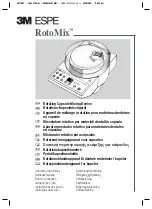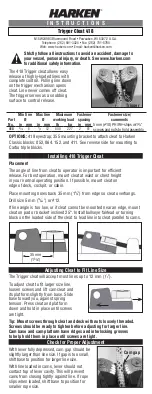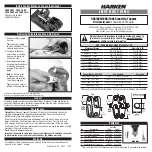
7
Warnings
3.2 Electrotherapy
3
Electrotherapy
•
Do not conduct electrotherapy treatment on patients with implants or any
other implanted electronic device unless the risk has been assessed and
found negligible.
•
Patients must not be connected to a radio-frequency surgical device at
the same time. This may cause burns under the electrotherapy
electrodes.
Operation of the electrotherapy device in the vicinity (e.g., within 1 m) of
strong electromagnetic fields (e.g., tomographs, X-ray or diathermy
devices) may cause oscillations in the output values of the
electrotherapy device.
•
Please maintain a safe distance of several metres.
•
The recommended maximal current density for currents that could cause
burns (e.g., galvanic current, diadynamic currents, current with a
galvanic component) is 2 mA eff/cm² electrode surface.
•
If the current density exceeds 2 mA eff/cm², users must be extremely
vigilant during treatment.
•
Positioning the electrodes in the vicinity of the chest may increase the
risk of cardiac fibrillation.
•
When using different electrodes, note that a smaller electrode surface
area may result in a higher current density.
•
The long-term effects of chronic electrical stimulation are unknown.
•
Stimulation should not be applied over the carotid sinus nerves,
particularly in patients with a known sensitivity to the carotid sinus reflex.
•
Stimulation should not be applied over the neck or mouth. Severe
spasm of the laryngeal and pharyngeal muscles may occur and the
contractions may be strong enough to close the airways or cause
difficulty in breathing.
•
Stimulation should not be applied transthoracically in that the
introduction of electrical current into the heart may cause cardiac
arrhythmias.
•
Stimulation should not be applied transcerebrally.
•
Stimulation should not be applied over swollen, infected, or inflamed
areas or skin eruptions, e.g., phlebitis, Thrombophlebitis, varicose veins,
etc.
•
Stimulation should not be applied over, or in proximity to, cancerous
lesions.
If the intensity control is increased, there may be currents greater than
10 mA eff and voltages greater than 10 V may apply at the outlet
sockets.














































